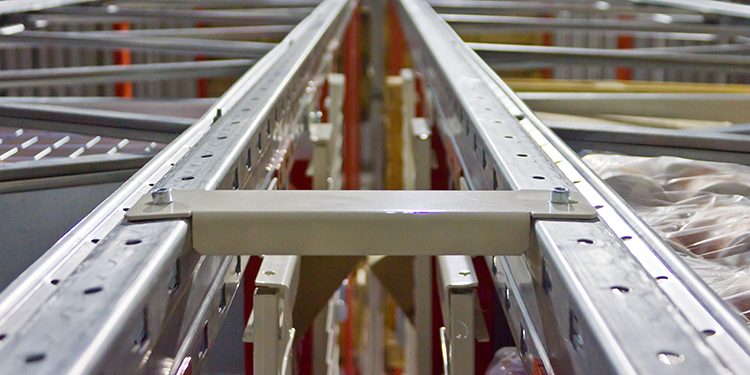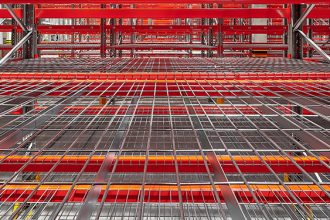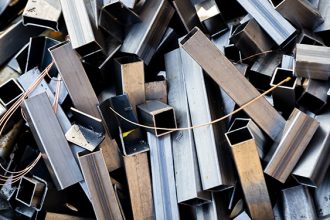Best Practices For Rack Repair Column Splices

As one of the most exposed components of industrial steel storage rack, columns are particularly vulnerable to damage — frequently from a forklift or pallet load impact. When a damaged rack upright is discovered, the system owner must decide between replacing the entire column or repairing the damaged section by removing and replacing it with a new piece spliced in to join it to the existing component.
To determine the optimal repair option, the guidelines advise rack owners to engage a storage rack design engineer to assess the damage. The engineer will perform the calculations necessary to first determine if a full replacement column is required. If not, the engineer can determine how the splice will be created in order to ensure it properly supports the load.
Because the structural integrity of the repair hinges upon maintaining a stable, continuous load path across the new splice joint, RMI offers detailed best practice recommendations in section 8.3.1 of the recently updated Guideline for the Assessment and Repair or Replacement of Damaged Rack — Version 2.0, noting:
The column splice needs to meet the loading requirements of the applicable loading combinations in ANSI MH16.1: Specification for the Design, Testing and Utilization of Industrial Steel Storage Racks, Section 2.1 or Section 2.2. The splice connection shall be evaluated for the following factors including, but not limited to:
-
- column axial force;
- flexural buckling;
- torsional buckling;
- flexural-torsional buckling;
- column bending strength; and
- column bending stiffness.
The Guideline also offers insights into the importance of repair kit splice joint cut tolerances and recommends two different approaches to manage any ensuing gaps to ensure sufficient load capacity is attained in the final repaired structure. Section 9.3 of the Guideline notes:
In cases where a section of an existing rack structure is removed and replaced with a repair kit, the tolerances for the splice joint specified by the supervising engineer need to be maintained in the field. The kit design may require that the existing rack column rest directly on the horizontal surface of the repair kit to achieve full rated capacity. (In these cases, the connecting bolts might not have sufficient capacity to carry the load themselves).
If there is a gap between the existing column and the repair kit, the gap needs to be shimmed as specified by the supervising engineer. When the repair kit does not require bearing on the horizontal surface, the bolted or welded connections need to be strong enough to transfer the load into the splice sleeve and back into the lower column member. In this case, the gap may not need to be filled.
By following these best practice guidelines for replacing or repairing a damaged rack column, a pallet rack system owner can be assured that the structural integrity of the resulting structure will again be restored to original specifications, significantly reducing the chance of failure and enhancing the overall safety of the facility and its employees.
To learn more about rack repair best practices, download RMI’s Guideline for the Assessment and Repair or Replacement of Damaged Rack — Volume 2.


